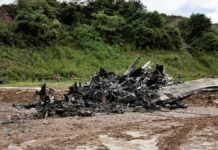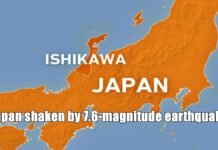
New Delhi: Nuclear fusion is the process of combining two lighter atomic nuclei into a heavier one, releasing a huge amount of energy in the process. This is the same process that powers the sun and the stars. Nuclear fusion has the potential to provide clean, safe, and unlimited energy for humanity, as it does not produce greenhouse gases or radioactive waste, and uses abundant fuels such as hydrogen isotopes. However, achieving nuclear fusion on Earth is very challenging, as it requires extremely high temperatures and pressures to overcome the natural repulsion between the nuclei.
What is JT-60SA and how does it work?
JT-60SA is the world’s largest and most advanced nuclear fusion reactor, located in Naka, north of Tokyo, Japan. It is a joint project between the European Union and Japan and is part of the broader international effort to develop fusion energy. JT-60SA is a tokamak, which is a doughnut-shaped device that uses powerful magnets to confine and control a hot plasma, a state of matter where electrons are separated from nuclei. The plasma is heated to 200 million degrees Celsius, which is hotter than the core of the sun and is injected with deuterium and tritium, two isotopes of hydrogen. When these isotopes fuse, they produce helium and a neutron and release a large amount of energy. The goal of JT-60SA is to study the physics of fusion and optimize plasma performance, as well as to test and validate technologies that will be needed for future fusion power plants.
What are the objectives and achievements of JT-60SA?
JT-60SA was officially inaugurated on December 1, 2023, after more than 15 years of construction and testing. It achieved its first plasma on October 26, 2023, which proved that the machine fulfills its basic function. ¹ JT-60SA aims to achieve several scientific and technological objectives, such as:
- To sustain the plasma for up to 100 seconds, much longer than previous large tokamaks.
- To achieve a ten-fold gain of plasma heating power, meaning that the plasma produces 10 times more energy than it consumes.
- To investigate how to control and optimize the plasma stability and performance, which are crucial for achieving fusion power.
- To support the International Thermonuclear Experimental Reactor (ITER), the world’s biggest fusion experiment that is being built in France, by providing data and feedback.
- To demonstrate and test technologies that would be needed to operate a fusion power plant, such as cryogenics, heating, control, diagnostics, and remote maintenance systems.
- To achieve and learn from a burning plasma, where the fusion reactions are self-sustaining and dominant.
- To test tritium breeding, which is the process of producing more tritium from lithium using the neutrons from fusion.
- To demonstrate the safety and environmental compatibility of a fusion plant.

JT-60SA is expected to start its full operation in 2024 and will run for about 10 years. It will involve more than 500 scientists and engineers from 50 companies and institutions from Europe and Japan. JT-60SA is the most advanced tokamak in the world and will contribute to the advancement of fusion science and technology.




















































